Bouncing Dot Online for Eye Tracking Exercise
We've shared much information on visual processing over the last few months. You've seen tips for addressing convergence insufficiency, visual tracking concerns, and other visual skill areas. Today we are talking about saccades and activities to improve saccades. These are the eye movements that allow the tracking skills necessary for reading comprehension, handwriting, and so many other areas. The saccade activities listed below are eye exercises that can help enhance visual processing skills. These visual tracking exercises can help with smooth pursuit of vision, in order to improve learning problems and other visual therapy concerns.
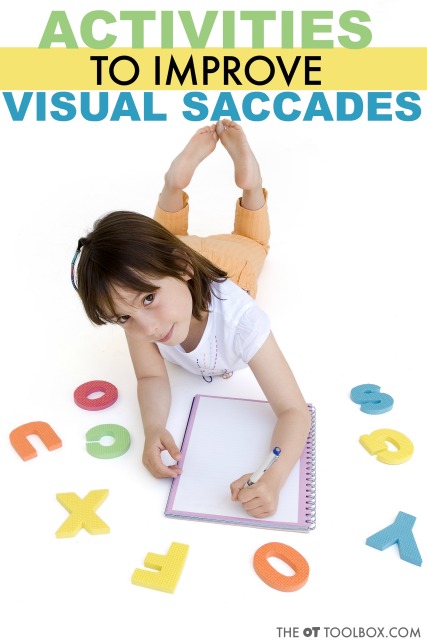
Visual Saccades Activities
You've identified impaired saccadic movements, the child has seen a developmental optometrist and maybe has corrective lenses, but is still struggling. Now what? Check out the activities below to incorporate into therapy and home programs that address poor saccadic movements directly.
Related Read: Check out this article to learn more about how saccades impact learning skills.
Activities to Improve Saccades
Here are Saccade Exercises presented in fun ways:
Wall Ball Visual Saccade Activity
This activity addresses saccadic movements on a large scale and challenges the child to stretch their eye muscles into the peripherals and back again. The objective is to hit the first target, catch the ball and hit the second target while moving only your eyes. This pattern is completed for as many times in row the kiddo can without dropping the ball or missing the target.
The larger the distance between the targets, the harder the challenge is. Wall Ball also doubles as a dissociation activity of the eyes from head movements.
All you need for Wall Ball is a ball, two targets and a wall or solid structure to bounce the ball off of. The ball can be any size as long as it bounces back directly to the child. Tennis balls and kick balls work the best. The smaller the ball, the more challenging the task is. Grade the activity to meet the kiddo's needs and abilities as he/she progresses.
How to Play Wall BallBegin with the target approximately four feet apart at eye level on the wall. Start with a horizontal line progressing to vertical, and then diagonal.
The kiddo should be standing approximately 3 feet from the wall so that they can see both targets without having to turn their head. This part is important as we want to work only the eye muscles. If the child cannot see both targets without moving their head, adjust the distance of the targets first and then the position of the child as needed.
Increase the challenge by adding paired colored targets and calling out what pair to hit one at a time or in a sequence. As the kiddo's saccadic patterns become better and smoother, the time needed to complete the task will be shorter.
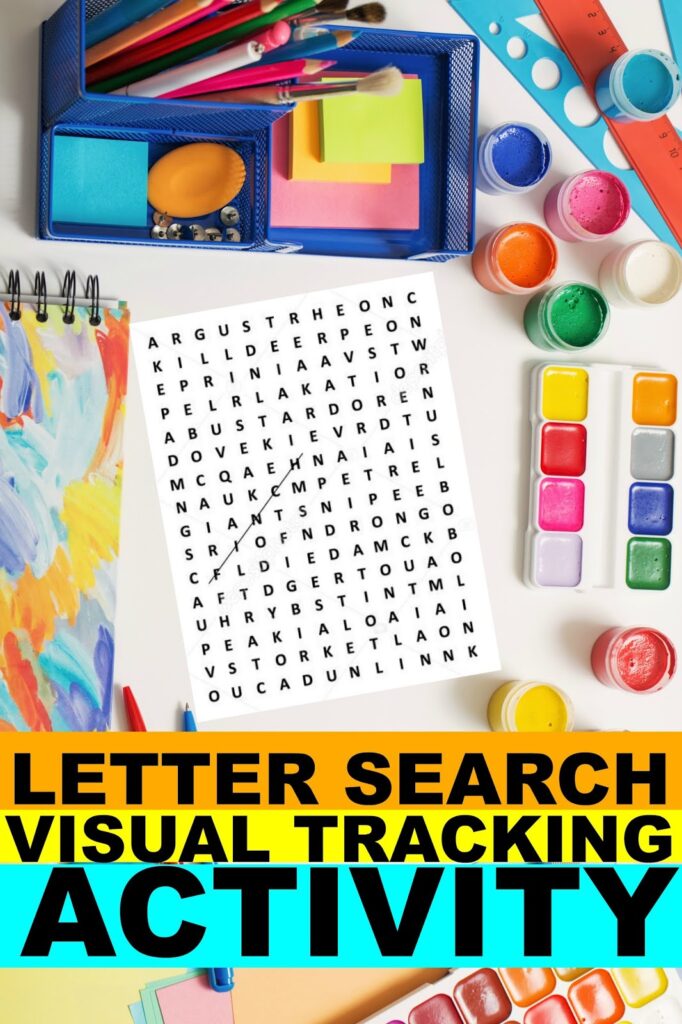
Read Word Searches to work on Saccades
Reading requires very precise and accurate eye movements. When these patterns and muscle movements are not natural, they have to be taught and can be a significant challenge for children with impaired saccadic movements.
The objective of Word Search Reading is to have the kiddo read the letters or symbols of the word search out loud without deviating from the line, or skipping a line once back at the beginning of the pattern.
Word Search Reading Directions: Begin with a simple word search to establish the child's abilities. A 4×4 line word search is usually a good place to start. As the child's skills increase or this is too easy, increase the size of the word search. The larger the word search, the harder the child has to work to move their eyes in a smooth movement across the page and back to the next line.
Word search reading can be completed as a table top task, or a vertical surface. It is good to practice both skills as saccadic movements are needed in a variety of settings, not just for reading and writing.
Word Search Reading patterns can be left to right/top to bottom, or top to bottom/ left to right. There should be an emphasis on left to right patterns initially as this is the way that we read and write. As the child's skills increase, patterns can be reversed right to left/top to bottom and top to bottom/right to left. The more patterns that the child's eyes are exposed to, the easier fluid movements between any given set of points will become.
While I have listed very set patterns for this activity, it is important to remember that saccades is the fluid, coordinated movement of both eyes between ANY given set of points in ANY plane or position.
Modifications for Word Search Reading to Address Visual Tracking Needs
Word Search Reading activities can be very difficult and result in the kiddo being frustrated as it is making their eyes work in ways that they are not used to. However, there are a few modifications outside of the size of the word search that you can utilize to develop the just right challenge for each kiddo.
The first modification is blocking out lines they are not supposed to be looking at. A ruler or a sheet of paper is a great place to start with this modification. If this is still not enough support and they are skipping letters in the line or reversing letters, try having them track with their finger or a special "tracking tool" (pencil with topper, fun pen, etc.).
Here is a DIY Visual Tracking Tool that can be used as an exercise, too.
Sometimes, even utilizing a finger or tracking tool is not enough and there is still too much visual input and their eyes are trying to jump ahead. In this case, an index card with a slot cut to fit one to five letters at a time can help keep their eyes moving in a nice line.
While word searches are great, if you have a child that is struggling with letter recognition, this task can be completed with numbers or symbols. The main premise is that whatever items you use, are in a grid pattern.
Adjust the challenge and supports as the kiddo gets better at reading the letters in the given pattern to create the just right challenge.
Saccade Activity with Timed Copying Tasks
One of the best activities to work on saccades is to complete table top activities. This simulates what kids do in school the best, and allows you to find where the breakdown is, and provide supports as needed.
Start with a small activity like a spelling list or site words on table next to the child and have them copy the words onto a piece of paper. Once they are able to do this in a reasonable amount of time increase the challenge to 3-4 words in sequence or short sentences, and then eventually a whole paragraph or short story. This set of activities is referred to as near point copying and is the foundation block for other copying tasks.
When they have mastered near point copying, it is time to move onto far point copying. This is when the items that are being copied are more than 18 inches from the child. Examples include copying from a SmartBoard or whiteboard, or off posters around the classroom. Eventually, this translates into taking notes in higher level education.
The same premise of starting small and building into larger tasks applies to far point copying as well. Utilize a timer to challenge the child to beat their best time and also to track progress. As they become stronger at looking between the two points without losing their spot, the faster the activity will go.
Visual Saccade Exercise: Speed Popsicle Sticks
Like Word Search Reading, this activity challenges the precise movements needed for efficient saccadic movements. Speed Popsicle Sticks is more exercise based then the other activities presented in this post and should be monitored for fatigue and strain like other exercise based activities. This activity is challenging and should be done with children who are able to follow directions and verbalize feelings of discomfort in their eye muscles.
The premise of this activity is to have the child look as quickly as they can between two points without losing focus or deviating from the path in a given amount of time. Popsicle sticks with stickers at the end of them work great at points to focus on.
Begin with the child sitting in front of you with their feet grounded. Hold the popsicle sticks approximately 12-15 inches apart, and 15-18 inches away from the child's face. Then instruct them to look at first one sticker, bring it into focus, and look at the next sticker bringing it into focus before moving back to the first sticker.
Start with a short amount of time, such as 10 seconds to begin, and 2-3 repetitions with a break in between each repetition. Increase the amount of time to complete the activity as the kiddo's eyes get stronger and they are not complaining of fatigue. Set a cap on time around 45 seconds for this exercise, and keep repetitions low.
Be sure that you listen to the child if they are complaining or are requesting a break. You do not want to cause eye fatigue or strain accidently.
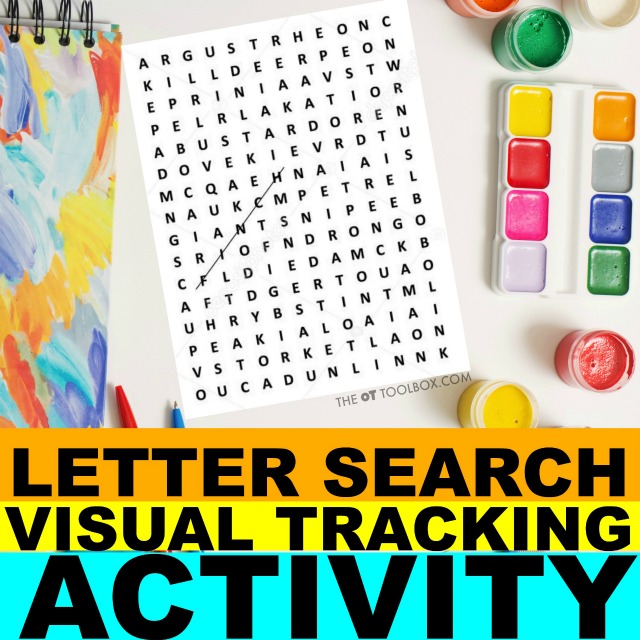
Games to Encourage Saccades
There are some great ready-made games on the market these days that challenge saccadic movements. Below is a list of a few of my favorites to utilize in therapy or for gift ideas for parents and home programs.
Amazon affiliate links are included in this list:
· Crossword puzzles with word banks
· Traffic Jam or Rush Hour Board Game
· Geoboards—Pegs or rubber bands with pattern cards
· Tangrams
· Snap blocks with pattern cards
· Lite Brite (Place the pattern cards on the side)
· Battle Ship
Final Note on Activities to Improve Saccades
Practice, practice, practice! That is one of the biggest parts in helping a child develop motor patterns, and saccades are no different. With the just right challenge in place and encouragement, the kiddo's saccadic patterns should become stronger and more fluid leading to increased success with visual tasks.
Looking for more information on vision deficits? Check out my OT Vision Screening Packet for useful handouts, checklists and a screener tool.
This visual screening tool was created by an occupational therapist and provides information on visual terms, frequently asked questions regarding visual problems, a variety of visual screening techniques, and other tools that therapists will find valuable in visual screenings.
Click here to read more about the Visual Screening Packet. This is a digital file. Upon purchase, you will be able to print the 10 page file and print off to use over and over again in vision screenings and in educating therapists, teachers, parents, and other child advocates or caregivers.

More visual Processing Articles you will love:

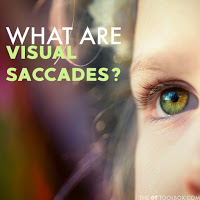
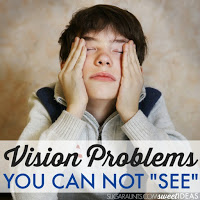


![]()
___________________________________________________________________________________
This article was written by The OT Toolbox Contributor, Kaylee:
 A little about Kaylee:
A little about Kaylee:
Hi Everyone! I am originally from Upstate N.Y., but now live in Texas, and am the Lead OTR in a pediatric clinic. I have a bachelors in Health Science from Syracuse University at Utica College, and a Masters in Occupational Therapy from Utica College. I have been working with children with special needs for 8 years, and practicing occupational therapy for 4 years. I practice primarily in a private clinic, but have experience with Medicaid and home health settings also. Feeding is a skill that I learned by default in my current position and have come to love and be knowledgeable in. Visual development and motor integration is another area of practice that I frequently address and see with my current population. Looking forward to sharing my knowledge with you all! ~Kaylee Goodrich, OTR
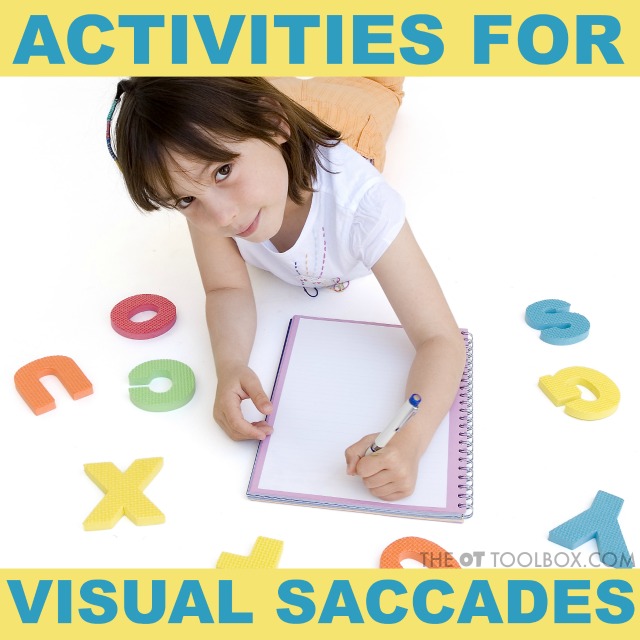
Bouncing Dot Online for Eye Tracking Exercise
Source: https://www.theottoolbox.com/visual-saccades-activities/
0 Response to "Bouncing Dot Online for Eye Tracking Exercise"
Post a Comment